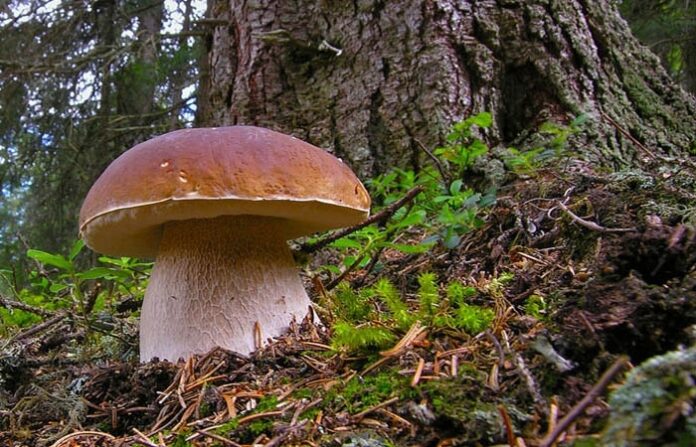
Everyone knows that basketball tops every Lithuanian’s list… The second is most likely mushrooming – or mushroom-picking. Many in the North American diaspora know about this hobby/obsession from our parents, but unless they passed on specific knowledge to us, the art of mushroom-picking may be lost to the generation born here.
The highest prize in the world of mushrooms is the baravykas (Boletus), star of Lithuanian cuisine and fairy tale. In my youth there were rumours about people finding them in Southern Ontario, but exact locations were as secret as torte recipes. The bottom line is that you must befriend someone from the old country and bribe them to accompany you on a mushroom hunt. More than once. Do not rely on websites or photos. Even neighbours are fallible. You don’t want to experience the charcoal cure (or worse).
The Lithuanian website alkas.lt advises sticking to the three most popular mushroom varieties. The Boletus edulis (Tikrinis baravykas) is the King of Mushrooms, known by many names: porcini, penny buns, cep, steinpilz, and king bolete. It is known as one of the most delicious and desirable edible mushrooms in existence.
Boletus badius (Rudakepuris aksombaravykis, literally “brown-hatted velvet boletus”), commonly known as the bay bolete, and Cantharelius (Voveraitės) or chanterelles, which are among the most popular of wild edible mushrooms. According to Wikipedia, the latter are orange, yellow or white, meaty and funnel-shaped. Many species emit a fruity aroma, reminiscent of apricots, and often have a mildly peppery taste (hence its German name, Pfifferling).

A famous Italian mycologist, Umberto Noni knows that there are 1200 varieties of mushroom in Lithuanian forests. He has tasted at least 600 of them and created a table with a rating system.
Lithuanian mycologist Almantas Kulbis has several rules “mushroomers” should follow: pick only mushrooms you know really well; don’t overpick to impress others with the quantity of your harvest – leave some for next year; be sure to prepare them properly, as some mushrooms change with cooking. It is best to use baskets, not plastic containers or bags to carry the mushrooms you pick.
As a disclaimer, we must emphasize that this article is not meant as a guide, only a brief, cursory introduction to mushrooms beloved in the Baltic.
From alkas.lt, Wikipedia





























